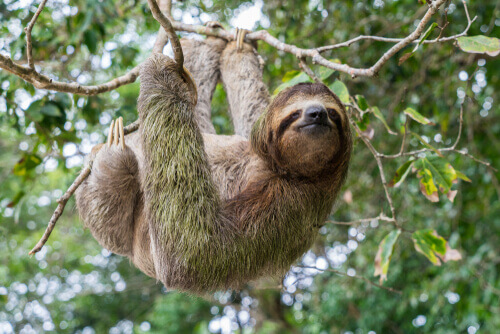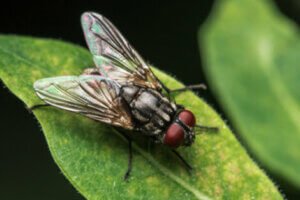Can Animals Perceive the Passage of Time?

Scientists believe that the way in which animals perceive the passage of time is just another aspect of evolution and survival. For example, some studies suggest that, for flies, the world appears to move approximately 7 times slower than it does for humans.
Smaller animals with a faster metabolic rate, such as hummingbirds, perceive more information within a single unit of time. This means that they experience events more slowly than larger-bodied animals with a slower metabolism, such as humans.
How do we measure the perception of time?
All television, computer and movie screens flicker. To the human eye, this flickering light provides the illusion of a constant stream of images, due to the high frequencies at which these displays operate.
This is how the relative perception of time – which is unique for each species – has been measured. This is called the “critical flicker-fusion frequency”. This fusion frequency is the point at which flashes of light appear to merge before the viewer’s eyes. In this way, an objectively intermittent light source gives the illusion of being constant.

Human perception of the passage of time
When we knock on a door, a human will perceive a collection of simultaneous events, a combination of sound, sight, and tactile sensations. In reality, information – in different modalities, but from the same source – travels through the brain along different pathways.
In fact, this information reaches the brain’s processing centers at different times. As such, it’s reasonable to assume that the brain must engage sensory-motor control and information processing in order for us to perceive the “here and now”.
Based on these facts, experts believe that the interpretation of different sensory modalities that seem to occur simultaneously requires information processing typical of the human brain. This process is what gives us the representation of human time.
In the case of other animals, the perception of the passage of time will be influenced by the way their sensory system handles information relating to position and speed.
Animal perceptions of the passage of time – size matters
Flies can detect the blinking of a flashing light up to four times faster than humans can. This explains how flies avoid being swatted.
Flies perceive our “time” as happening in slow motion, giving them plenty of time to escape. Of course, time actually passes at the same speed.
A fly’s eyes send updates to its brain much more frequently than ours do. Its mental processes are also far faster than ours.
Research also suggests that the smaller an animal is and the faster its metabolic rate, the slower it will perceive the passage of time.

The animals studied spanned more than 30 species, including rodents, eels, lizards, chickens, pigeons, dogs, cats, and leatherback turtles.
Research suggests that, in a wide range of species, how they perceive the passage of time is directly related to their size.
These studies highlight the importance of time perception in animals. In nature, the ability to perceive time on very small scales can be the difference between life and death.
The advantages of a secret communication channel
For any organism, ecology is all about finding a niche that no one else can fill, where it can be successful.
The auditory register of many animals allows them to hear sounds in a spectrum in which the human ear doesn’t operate. Similarly, some animals may be able to exploit differences in time perception between species to their advantage.
For example, many species – such as fireflies and deep-sea animals – use flashing lights as signals. It’s possible that larger and slower predatory species may be unable to decode these signals.
If the predator’s visual system isn’t fast enough, then this visual form of communication could give signaling species a secret channel of communication.

Conclusion
We still have a lot to learn about the perception of time in animals. These types of studies suggest that the perception of the passage of time constitutes a little-explored dimension, in which some species may specialize.
Further research is needed to understand how animals use their slow motion skills. It’s possible that there may be aspects of animal life that may be invisible to our eyes.
All cited sources were thoroughly reviewed by our team to ensure their quality, reliability, currency, and validity. The bibliography of this article was considered reliable and of academic or scientific accuracy.
- Healy, K., McNally, L., Ruxton, G. D., Cooper, N., & Jackson, A. L. (2013). Metabolic rate and body size are linked with perception of temporal information. Animal Behaviour, 86(4), 685-696.
- Reas, E., (2014) Small Animals Live in a Slow-Motion World. Scientific American Mind 25: 4, doi:10.1038/scientificamericanmind0714-11a
- Glazier DS. (2015). Is metabolic rate a universal ‘pacemaker’ for biological processes? Biol Rev Camb Philos Soc. 90(2):377-407. doi: 10.1111/brv
- Bobrowicz, K., Osvath, M., (2019). Cognition in the Fast Lane: Ravens’ Gazes are Half as Short as Humans’ when Choosing Objects. Animal Behavior and Cognition. 6(2):81–97
